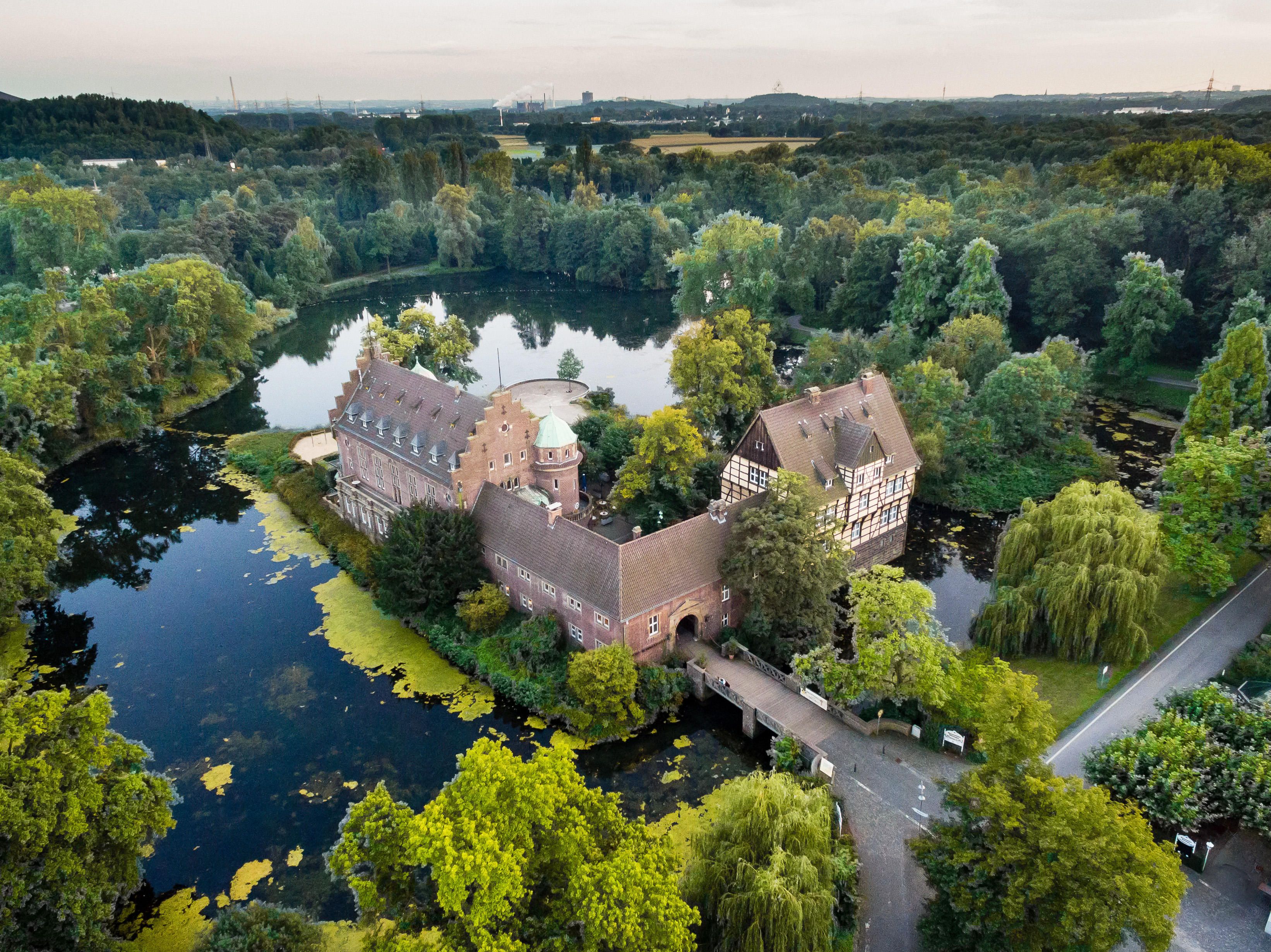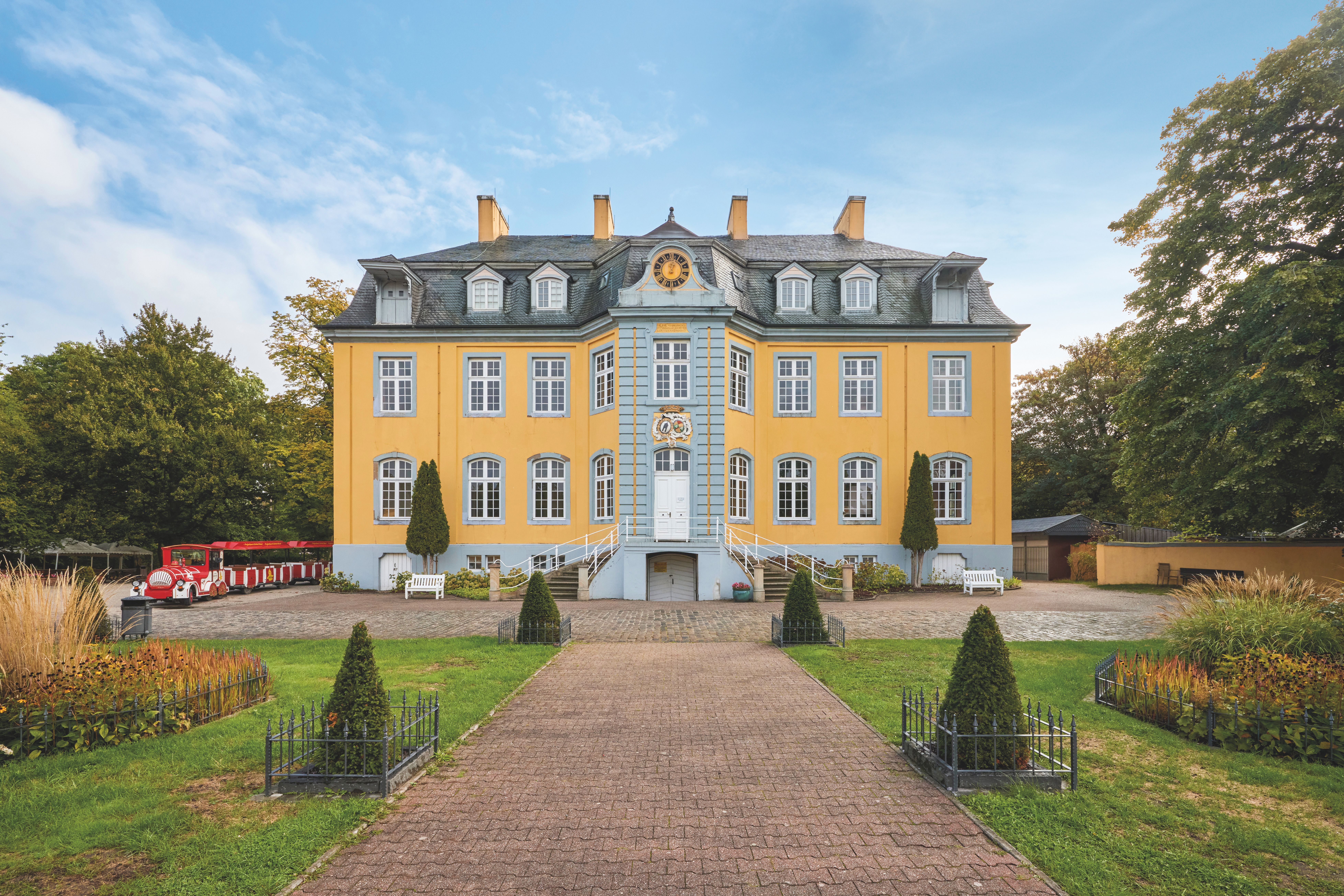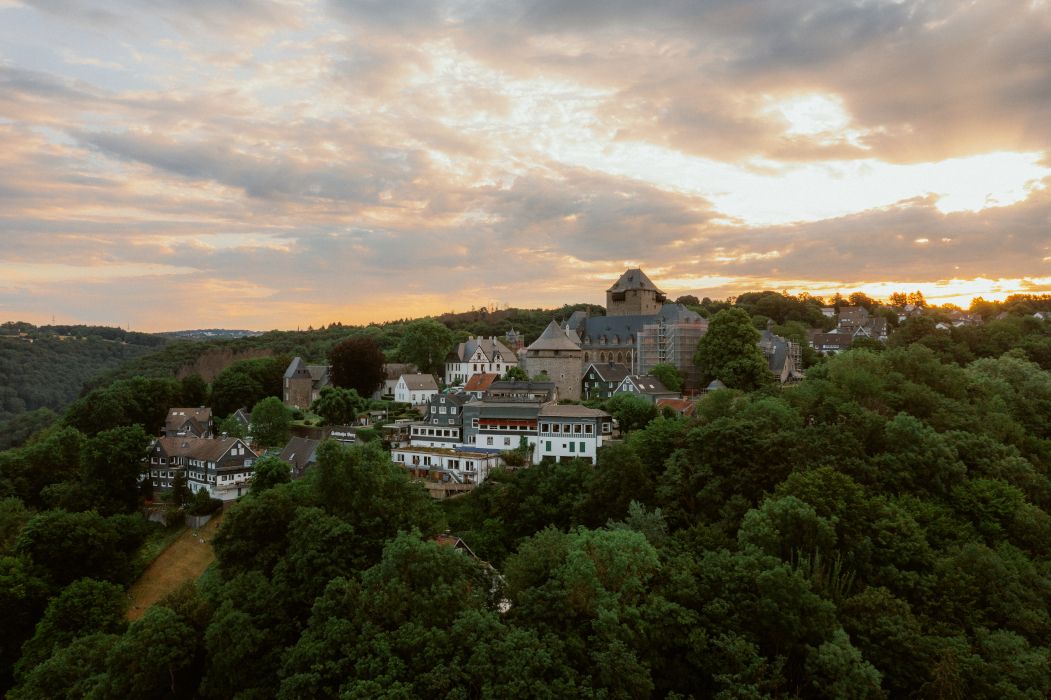Between the Ruhr Valley cycle path and the half-timbered idyll stands a building that at first glance seems to have fallen out of time: a moated castle surrounded by moats that was built around 1509, rebuilt in 1647 and redesigned in the neo-Renaissance style in the 1870s. At second glance, however, Hugenpoet Castle proves to be very modern. The building in Essen-Kettwig is not a museum, but a popular luxury hotel. Anyone arriving here is given a warm welcome.
On a tour of the grounds, guests first notice the stone portals and symmetrical façades, which are more reminiscent of a French country castle than the industrial Ruhr region. But the first impression is not deceptive: the complex is one of the few preserved moated castles in this region that is not only a listed building, but also offers a living stage for today.
Where once there were stables and storerooms, guests now stay in luxuriously furnished designer suites. Inside the main building, stucco ceilings, marble gates and elegant wooden staircases catch the eye. In the restaurants, ballrooms and salons, gourmets dine in rooms that combine historical style elements with contemporary architectural art. Since 1955, the castle has been run as a stately accommodation and restaurant, attracting international guests from conference groups to wedding guests.
At culinary events such as wine tastings, champagne tastings, tea or picnic hours, participants can even meet the castle's owners Maximilian Freiherr von Fürstenberg and his wife Stephanie from time to time. Barons von Fürstenberg purchased Hugenpoet Castle in 1831.
Half-timbered houses and the textile industry
Travelers who make a stop here have many opportunities to pass the time with exciting experiences in the immediate vicinity: In the old town center of Essen-Kettwig, also known as the garden city, half-timbered houses, workers' apartments, villas, factory buildings and housing estates come together. They still bear witness to the textile industry that once had its headquarters here. Anyone tracing the history of the town cannot miss the classicist town hall on the market square dating from 1830, which initially served as a cloth factory.
Hiking enthusiasts will find other points of interest in Essen's largest district on the Kettwiger Panoramasteig. On the approximately 35-kilometre circular trail, you can enjoy wonderful views, see red deer and fallow deer in the game reserve or marvel at the historic railroad bridge over the Ruhr. Anyone staying longer in the Ruhr metropolis should also pay a visit to the Zollverein World Heritage Site, the Grugapark and the city center with its cathedral and Folkwang Museum. The Neviges pilgrimage cathedral is also worth a visit. The building, designed by renowned architect Gottfried Böhm, is located in Velbert, but is only around 20 minutes away by car.



